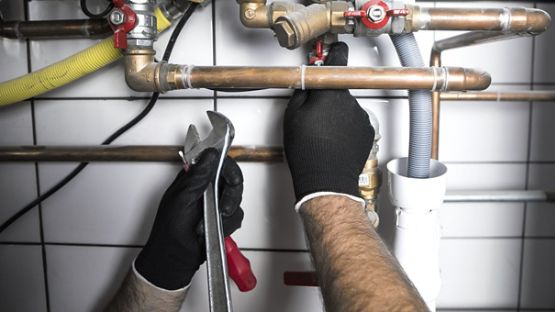- Check caulking around windows and weather stripping around doors. If either is dry and cracked, replace them to avoid excess heat loss.
- Drafts can happen in places that may be less obvious to you, so check baseboards, attics and crawl spaces as well. An easy way to spot a draft is to have a candle handy and watch if the flame flickers. If insulation is not in your budget yet, simply sealing the exits can make a big impact.
- Invest in a programmable thermostat to lower your home temperature while you sleep and when you are away from your home during the day. Many thermostats can now be controlled by mobile apps, giving you further flexibility to manage your usage. If you have a manual thermostat, you can get into the habit of adjusting it accordingly.
- It’s even better if you can control the temperature by room or area of the house. If you’re not spending much time in the dining room or the guest bedroom, keep the doors closed and the temperature low.
- Adjust the water heater temperature by a few degrees. Most are set to 60°C as a default, but in most cases can be safely dropped to 54°C, according to the Canada Safety Council. Before you do so, however, check and follow your local building and plumbing codes for precise numbers as they may vary. Dropping the temperature below what the codes specify is not recommended as it can lead to bacterial growth in the tank with the potential to produce adverse health effects.
- Switch ceiling fans to run clockwise on low speed so the warm air that rises is pushed back down.
- When cooking, use the heat from your oven for an extra boost of warmth. When you’ve finished, just keep the oven door open and let the heat flow out.
- Bring out the wool blankets, sweaters and socks. The ultimate low-cost solution to keeping warm is to bundle up in cozy clothing. Warm, breathable socks and slippers are especially effective at keeping your core temperature steady.
Money saving tips for winter freeze

Read more like this

24 Nov 2025
Save money with these essential winter energy-saving tips

19 Nov 2025
How to prevent lithium-ion battery hazards at home

15 Sep 2025
What is additional living expenses coverage? A quick guide

30 Jun 2025
How to prevent wind damage to your home

30 Jun 2025
How to protect your car from hail damage

16 Jun 2025
Cottage and cabin comfort: blending style and resilience with lasting materials

26 May 2025
Home renovation tips: Planning a successful renovation project

22 May 2025
The ultimate home maintenance checklist: Essential tasks for renters, homeowners and condo owners

12 May 2025
Get ready for warmer weather: Spring home maintenance tips for your home

5 May 2025
Getting it right: How do you value a house for insurance?

3 Apr 2025
How to winterize your home for extended absence

5 Feb 2025
Do I need renters’ content insurance? Understand tenant insurance and protect your personal belongings
This article is intended for general informational purposes only and should not be considered as professional or expert advice. While every effort has been made to ensure the accuracy of the information provided, Aviva does not accept liability for any actions taken based on its content. Please speak with your Aviva insurance representative if you would like to learn more.
Copyright in the whole and every part of this site belongs to Aviva Canada Inc., unless otherwise indicated, and may not be used, sold, licensed, copied or reproduced in whole or in part in any manner or form or in or on any media to any person without the prior written consent of Aviva Canada Inc.
